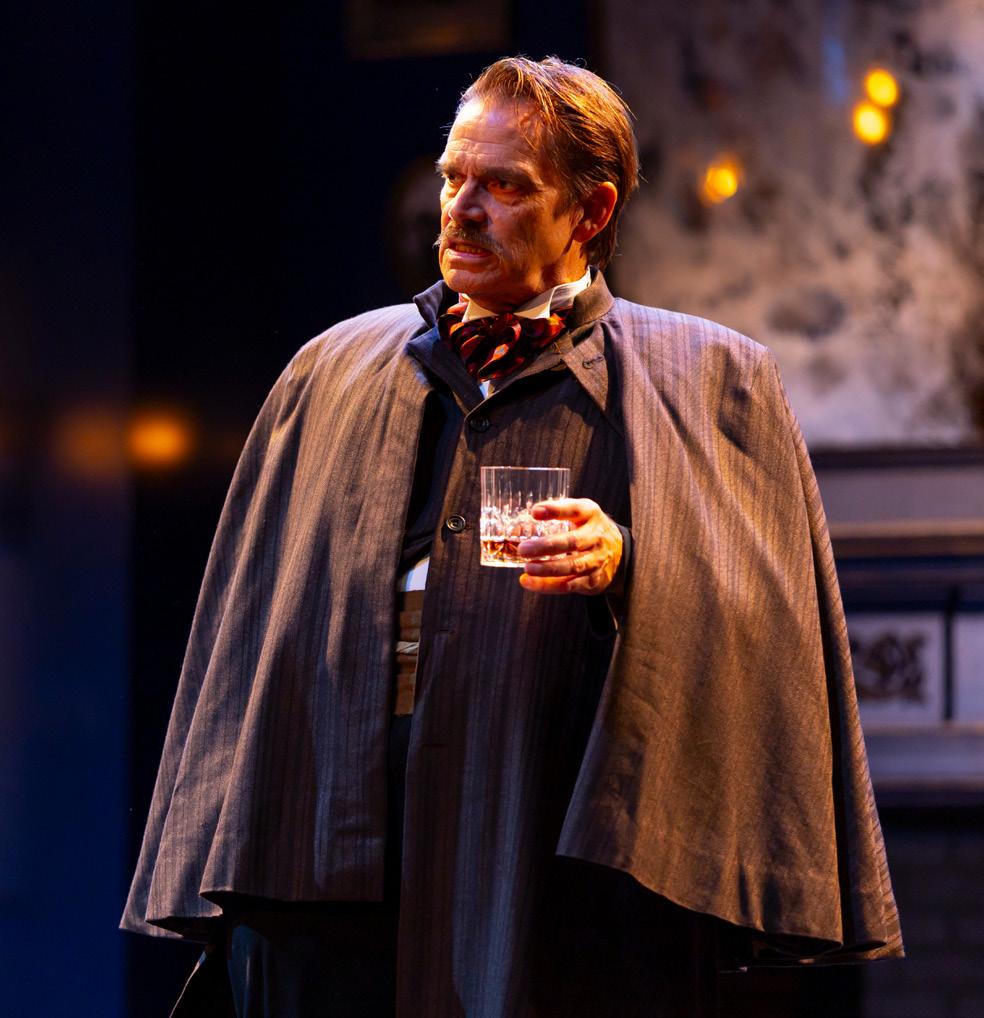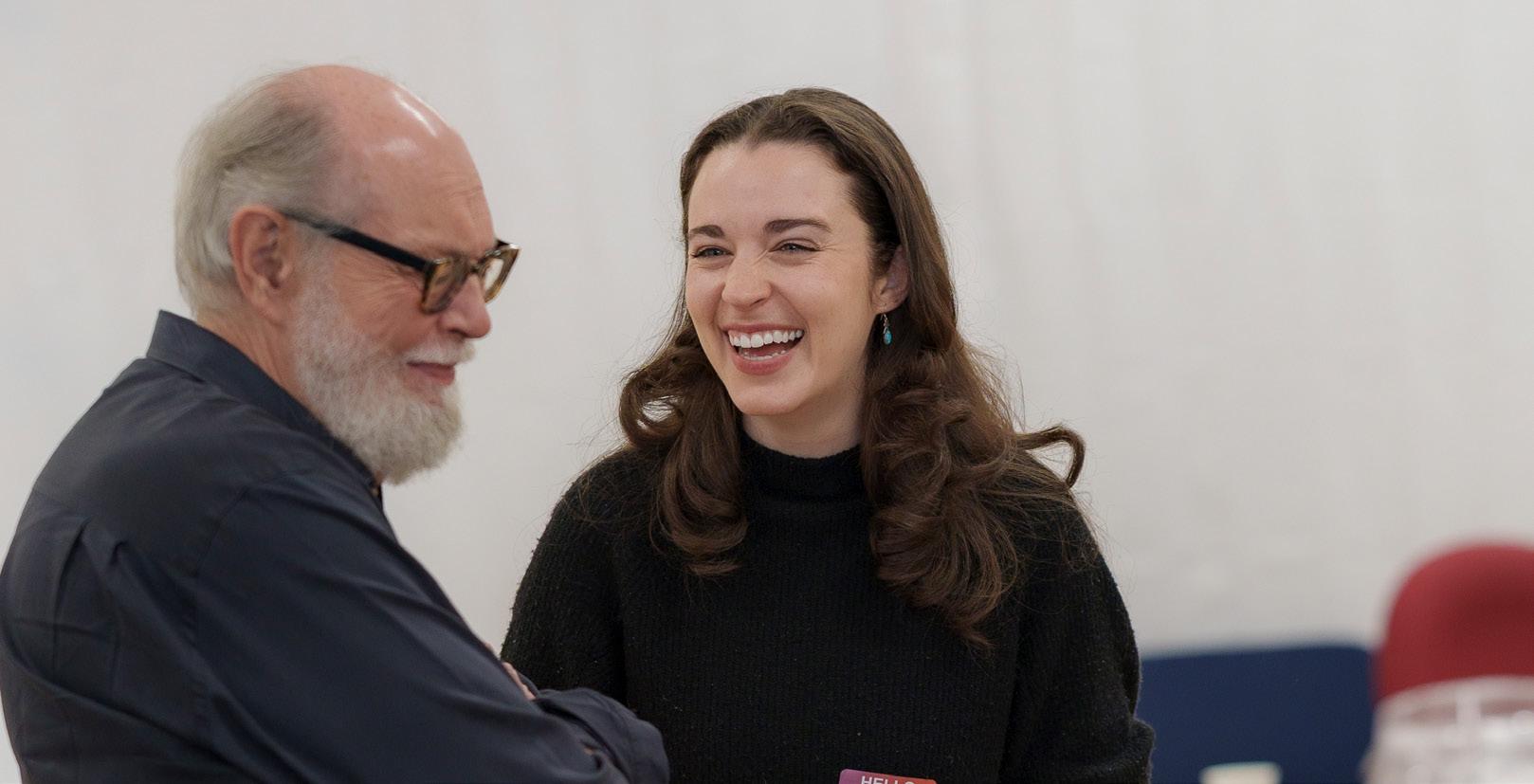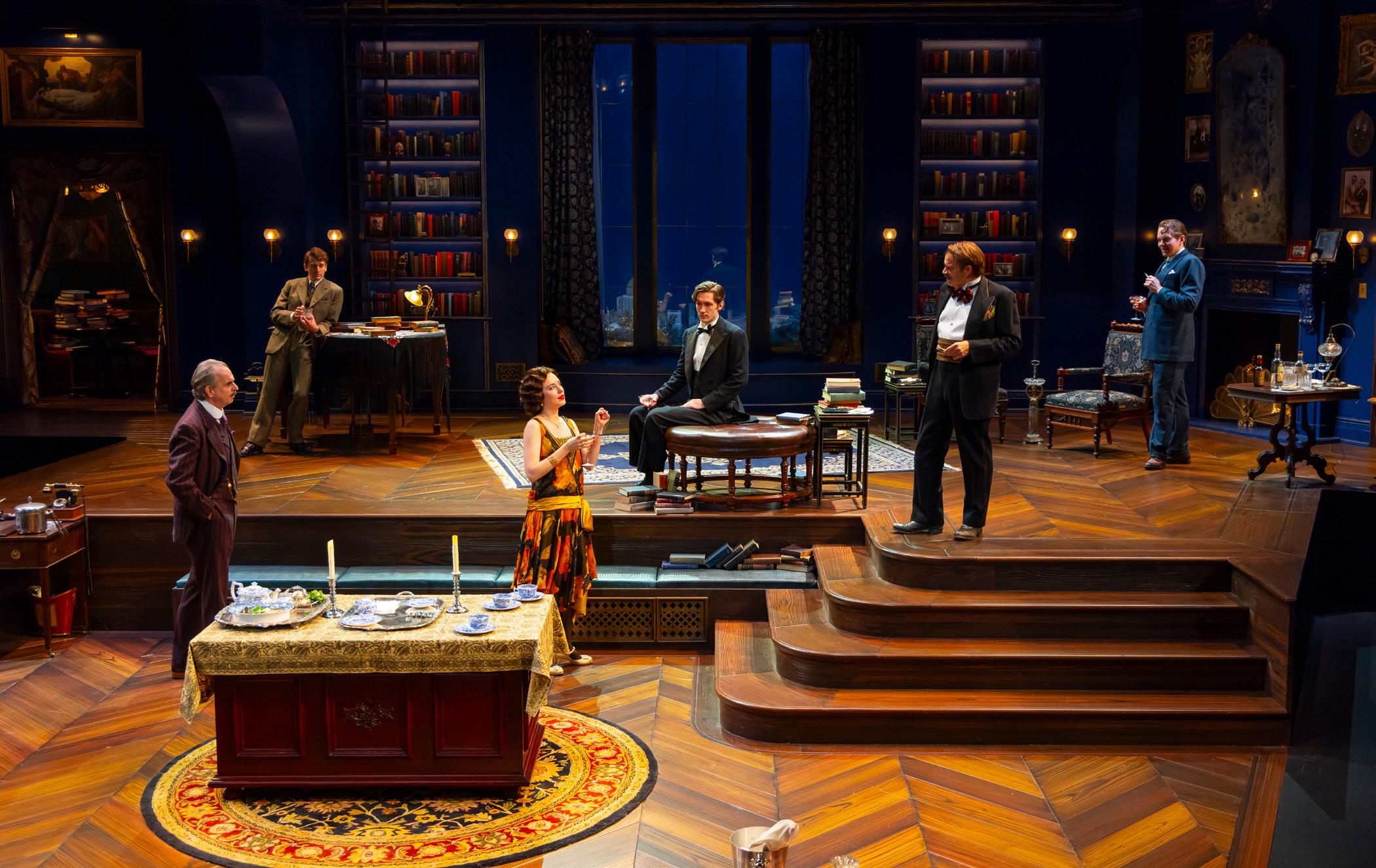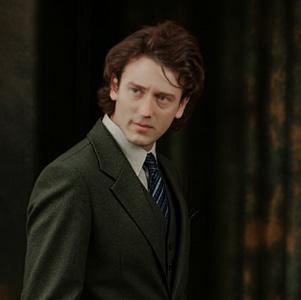Hatcher
Based on the play Rope’s End
By Patrick Hamilton


Hatcher
Based on the play Rope’s End
By Patrick Hamilton

Attending live theater is a unique experience with many valuable educational and social benefits. To ensure that all audience members are able to enjoy the performance, please take a few minutes to discuss the following audience etiquette topics with your students before you come to Hartford Stage.
• How is attending the theater similar to and different from going to the movies? What behaviors are and are not appropriate when seeing a play? Why?
• Remind students that because the performance is live, the audience affects the performance. No two audiences are exactly the same and no two performances are exactly the same—this is part of what makes theater so special!


• Theater should be an enjoyable experience for the audience. Audience members are welcome to applaud when appropriate and laugh at the funny moments. Talking is distracting to other audience members and the actors on stage. Theaters are constructed to carry sound efficiently!
• Any noise or light can be a distraction, so please remind students to make sure their cell phones are turned off. Students should not text, or take photos or video during the performance.
• Students should sit with their group as seated by the Front of House staff and should not leave their seats once the performance has begun.
May 21, 1924 - Leopold and Loeb murder Bobby Franks
Nathan Leopold and Richard Loeb met as students at the University of Chicago. Both were highly intelligent, good-looking, and privileged. They were still in their teens when they decided to pull off the “perfect crime.” Inspired by the concept of Frederick Nietzsche’s Übermensch or “Superman,” they became obsessed with the idea that they could be above morality or above the laws of good and evil. To prove their human superiority, they murdered a 14-year-old boy, Bobby Frank, a 2nd cousin of Loeb’s. The crime was not airtight, and a pair of Leopold’s glasses left near the body led the police to the teens who committed the ghastly crime. Famed attorney Clarence Darrow was hired to defend this “crime of the century,” and the American public followed the grisly case compulsively. While admitting that his clients were guilty, Darrow managed to save them from the death penalty by arguing that, in part, they committed the crime inspired by the philosophical teachings of Nietzsche. They received life in prison.
March 3, 1929 – Patrick Hamilton’s play Rope’s End premieres at London’s Strand Theatre The world was fascinated by Leopold and Loeb’s psychology and Darrow’s brilliant defense of their crime. One of the people following this story in the papers was British writer Patrick Hamilton. He reconceived the crime and transported the story to England, writing the successful play Rope’s End.
1939 – The play is adapted for the small screen by the BBC
1947 – Another production of the play was broadcast on television
1948 – Alfred Hitchcock’s movie premieres (his first in technicolor) Hume Cronyn and Arthur Laurents credited as screenwriters.
2025 – Jeffrey Hatcher’s adaptation of Patrick Hamilton’s play, now titled Rope
Credits: https://www.pbs.org/wgbh/americanexperience/features/monkeytrial-leopold-and-loeb-trial/ https://www.bbc.com/culture/article/20240131-leopold-and-loeb-the-grisly-crime-of-the-centurythat-fascinated-hitchcock-and-others
Gin and It: A classic alcoholic cocktail made with gin and sweet (Italian) vermouth.
First Editions: The first version of a book sold by a publisher. Many times, the first printing of a famous book can be valuable to collectors.
Café de Paris: A nightclub in the West End of London which opened in 1924.
Hedonist: A person who is devoted to the pursuit of pleasure (Merriam-Webster)
By Sophie Greenspan
Sophie Greenspan: You tend to gravitate towards dark, mysterious works—like your Dr. Jekyll and Mr. Hyde adaptation that audiences saw at Hartford Stage last year—or murder mysteries like Dial M for Murder
Jeffrey Hatcher: I’ve killed a lot of people.
SG: You’ve killed a lot of people! What is it about murder or mystery stories that inspire you towards a stage adaptation over, say, Pride and Prejudice?
JH: Well, if someone asked me to adapt Pride and Prejudice, I wouldn’t say no! I’d probably bump off Miss Somebody… But I’d argue that most really good plays have elements of mystery and murder in them. Hamlet is a murder mystery. Oedipus is a murder mystery. So, you know, it’s not that far afield in the realm of playwriting and drama.
I’ve always loved this stuff since I was a kid: Arthur Conan Doyle, Agatha Christie, Edgar Allen Poe. I was never much into Westerns or war stories, but murder mystery, detectives, spies, deception… a lot of people pretending to be something that they aren’t. If someone were to look back on the plays I’ve written, there are always characters who present one version of themselves to the public but are in fact entirely different privately. Those things really appeal to me, but it also has a theatrical element.
SG: Tell us about your process of adaptation.
JH: Writing an adaptation requires a more objective, surgical, technical approach than an original work. Having said that, once you get into the work itself, if an element of subjectivity doesn’t enter in, then it ends up being hack work.

You have a patient—I don’t mean to say it’s a sick patient—it’s merely a patient who’s etherized upon a table and can’t talk back. Your job is: “How do I make this patient walk on stage?”
I do believe that there is a huge element of betrayal in every adaptation. That you cut tons of stuff, you rework, you condense. Things that are done over the course of 600 pages in a novel, you have to compress and simplify. The stage is crude in that sense. We’ve really only got two hours or so to tell a story. And, you know, great novels—even short great novels, like The Great Gatsby, for instance—take six hours to read out loud.
So, you’re always going to be betraying things. Killing things. Throwing things away. But, if you have respect for the work and respect for yourself, then you’re going to show fidelity to the core ideas in the original work. I can cut characters in Rope. I can turn three acts into one act. I can change motivations—as I have—and I can change a lot of incidental or interstitial plot points, but I can’t change the initial idea because, aside from anything else, it would make the whole machine break down. I’m grateful and honored to be a partner with the original author. I’m not playing “Can you top this?”

SG: Your play, Rope, is adapted from Patrick Hamilton’s Rope’s End (1929). What is it about the play makes it ripe for a brand-new retelling?
JH: Well, there is no good reason to adapt something that’s perfect. The great thing about Rope’s End—or rather the advantageous thing for an adaptation—is that it’s a great idea and it’s got great elements, but I would argue that it is a little creaky. The three-act form is simply not a form that audiences these days tend to dig. I’ve always thought that Rope’s End was too steady a ride. It needed twists and turns and moments when the road drops out from under you.
I also wanted to see if we could excavate some things about the characters that neither Hamilton nor Alfred Hitchcock were able to do because of censorship. The 20s and 40s were not as overt as we are today. In a world where people didn’t admit that there were gay men, a lot of people might have seen Rope’s End and not even gotten it. The 1948 film is even less explicit, but today, people will come into the theater, and they’ll immediately know that those two guys who live together are a couple.
SG: When were you first exposed to the Rope story? Was it Hitchcock’s 1948 film?
JH: I’m sure it was Hitchcock. There was a clutch of Hitchcock films from the late 40s and 50s that were re-released in the 1980s after having been embargoed for maybe 15, 20 years, including Rope.
There was something to seeing it on the big screen. You’re so aware of the camera movements. You’re aware of the tiniest shakes, of the little bits of lost focus. And those cameras were gigantic. Apparently, they would have twenty guys running around moving walls and repositioning lights. As a technical accomplishment, it’s kind of unbelievable.
That’s the first introduction, and then I saw a faithful production of the Patrick Hamilton play about two years ago at a theater out in Minneapolis. It was a very good production, but I still felt the play wasn’t as good as it could be. It was a bit too genteel. It was very polite. It felt like the car was stuck… not in neutral, but in first gear for a long time.
SG: And how do you feel about this production?
JH: Well, it’s a wonderful cast. That’s easily said. One of the things I love about Daniel [Neale, who plays Brandon] and Ephraim [Birney, who plays Lewis] is that they enjoy themselves so much on stage. Daniel—you can tell—enjoys playing a monster. He’s a stylish monster. He’s a charming monster. For people
who like Patricia Highsmith, a Mr. Ripley kind of person. A sociopath who makes jokes and is attractive to all genders. Ephraim has this wonderful, sympathetic side to him. Despite being one of the killers, Lewis is by far the most sympathetic character on stage.
SG: Leopold and Loeb, on whom the fictional Brandon and Lewis are loosely based, sought to commit the “perfect crime” when they killed young Bobby Franks in Chicago in 1924. In fact, it was deemed at the time the “crime of the century.”
JH: Well, you know, it’s good to get there early in the century. You get to have first dibs! You have to wait until O.J. shows up for it to really count.
SG: That’s a very good—and funny—point! As someone who is a clear aficionado of crime, both real and fictional, if you were to attempt the perfect crime, what would it look like?
JH: You know what, I think every murderer gets found out. One gives one’s self away. The metabolism lets loose. Part of the problem is that there are all these Hitchcock movies and Columbo episodes where charming murderers with beautiful ascots are saying: “But Lieutenant, I have the perfect alibi.” We create unbelievable characters who are smooth and easy at it, but in reality, murderers seem to be two modes: either they’re blubbering or affectless. And the thing is, cops spend so much time with the victims’ loved ones that they can tell somebody who’s really upset from someone who’s faking being upset.
The problem is, we have no practice. In the very first Columbo, there’s a scene where Columbo says “Well, you know sir, a murderer—even a really smart one—is an amateur. He’s only got one shot to get it right. But us? We do this every day.”
It’s a lovely little exchange. You know, there’s something to be said for the brilliant amateur, but the professional knows all the tricks.



(20, 30s) Fine featured, smart, cultured, expensively dressed. Cool, self-satisfied, amused, confident.

(20, 30s) His junior partner. Also expensively dressed. Good looking, polite. He is the less confident specimen.

Meriel
(20, 30s) The fiancé of Ronald, the missing man.

(20, 30s) A friend of Brandon and Lewis’ from school.

(40, 50s) Brilliant, dry, wry, caustic, and very entertaining. He lost most of one leg in the Great War. He is an esteemed professor who taught Brandon, Lewis, Kenneth, and Ronald.

Mr. Kentley (60s) Rich, conservative, cultured, kind. The father of Ronald, the missing man.
(20, 30s) The dead man.
Hartford Stage Education Programs are supported by
The BFA Endowed Fund at the Hartford Foundation for Public Giving
Connecticut State Department of Education
Connecticut State Judicial Branch
Enterprise Foundation
Ensworth Charitable Foundation
Mr. & Mrs. William Foulds Family Foundation
Greater Hartford Arts Council
Hartford Foundation for Public Giving
The George A. & Grace L. Long Foundation
The MorningStar Fund at the Hartford Foundation for Public Giving
SBM Foundation
Scripps Family Fund for Education and the Arts
The Michael E. Simmons Foundation
Talcott Resolution
Travelers Foundation
The University of Saint Joseph
Executive Production Sponsor
Rick & Beth Costello
Production Sponsors
Jill Adams & Bill Knight
Don & Marilyn Allan
Rick & Beth Costello
For more information about education programs at Hartford Stage, please call 860-520-7244 or email education@hartfordstage.org.